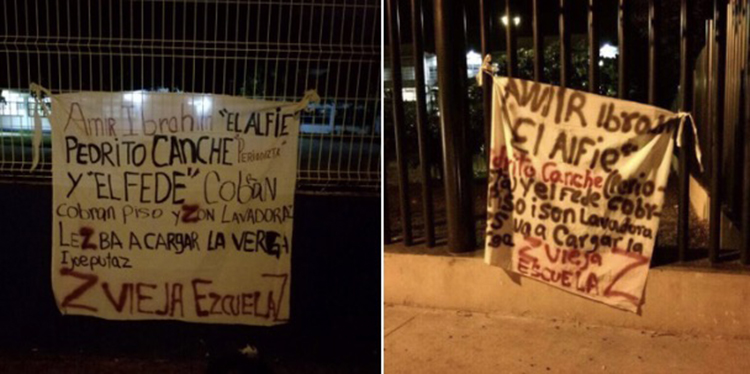Threats and intimidation – Mexico’s weapons of mass censorship

Reporters Without Borders (RSF) condemns the threatening messages left for four Mexican journalists in the past week that warned them to stop their outspoken reporting. This barbaric behaviour has again confirmed that Mexico’s journalists are in desperate need of protection.
The four journalists targeted by the threats are based in Tabasco, Quintana Roo and Michoacán, states with particularly high levels of organized crime and corruption.
The first was Luis Rubén López Domínguez, a reporter for the Tabasco Hoy newspaper in Paraíso, in the southeastern state of Tabasco. Gunmen opened fire on López’s car while it was parked outside his home on 19 July and left message on the windscreen warning him to stop reporting if he did not want to get killed.
Two placards with death threats were found the same day on the streets of Cancún, in the nearby southeastern state of Quintana Roo. Signed by Los Zetas, one of Mexico’s most dangerous crime cartels, the placards named two journalists: Pedro Canché, the publisher of the Pedro Canché news site, and Amir Ibrahim, the editor of the El QuintanaRoo news site.

The fourth target was José Maldonado Sotelo, the head of the Noventa Grados news agency in Morelia, in the southwestern state of Michoacán. A mysterious email received at the news agency on 21 July warned Maldonado to stop covering the work of the Michoacán attorney-general’s office.
“Whatever the origin, such attempts to intimidate and censor are intolerable and unacceptable,” said Emmanuel Colombié, the head of RSF’s Latin America bureau. “As well as protecting the targeted journalists, the local and federal authorities must identify and punish those responsible for these death threats. Intimidation of this kind fosters a climate of fear and self-censorship that has a terrible impact on freedom of expression in Mexico.”
The uncertainty about the origin of the threats is particularly disturbing and is reinforcing the suspicions of the journalists that local officials may have been responsible.
López thinks the Paraíso authorities were the source of threat against him. He says they did not appreciate his latest stories about Paraíso mayor Bernardo Barrada Ruíz’s questionable activities. On the day of the shooting, the city hall’s spokesman accused López of staging it himself.
Canché said he thought those responsible for the Cancún placards were “not the narcos but political actors who have teamed up to spread fear and terror among the few critical journalists working in Quintana Roo.” Canché was arrested in 2015 for covering a demonstration and was held unjustly for nine months (see the RSF video).
Maldonado, who was already threatened on 3 May, said he thought the threatening email received on 21 July was directly linked to his news agency’s reporting about the questionable past of Rogelio Arredondo Guillén, the head of the Investigation and Analysis unit at the Michoacán attorney-general’s office, who was murdered on 30 June.
Michoacán is a particularly dangerous state for the media. Michoacán-based TV journalist Salvador Adame Pardo’s charred body was found in June, a month after his abduction.
Mexico is ranked 147th out of 180 countries in RSF’s 2017 World Press Freedom Index.



